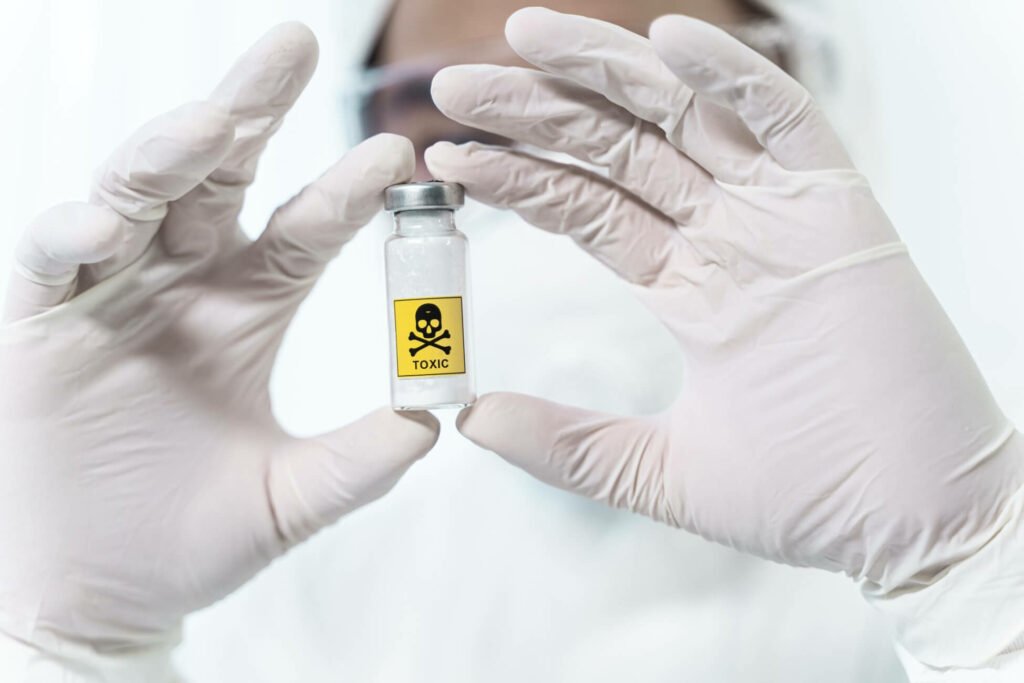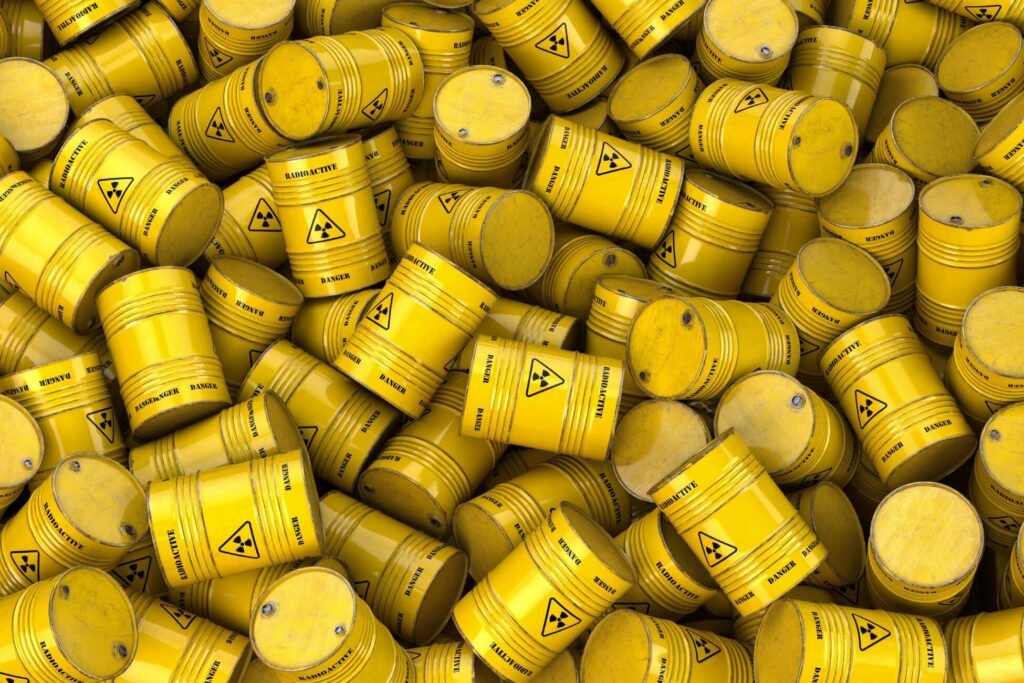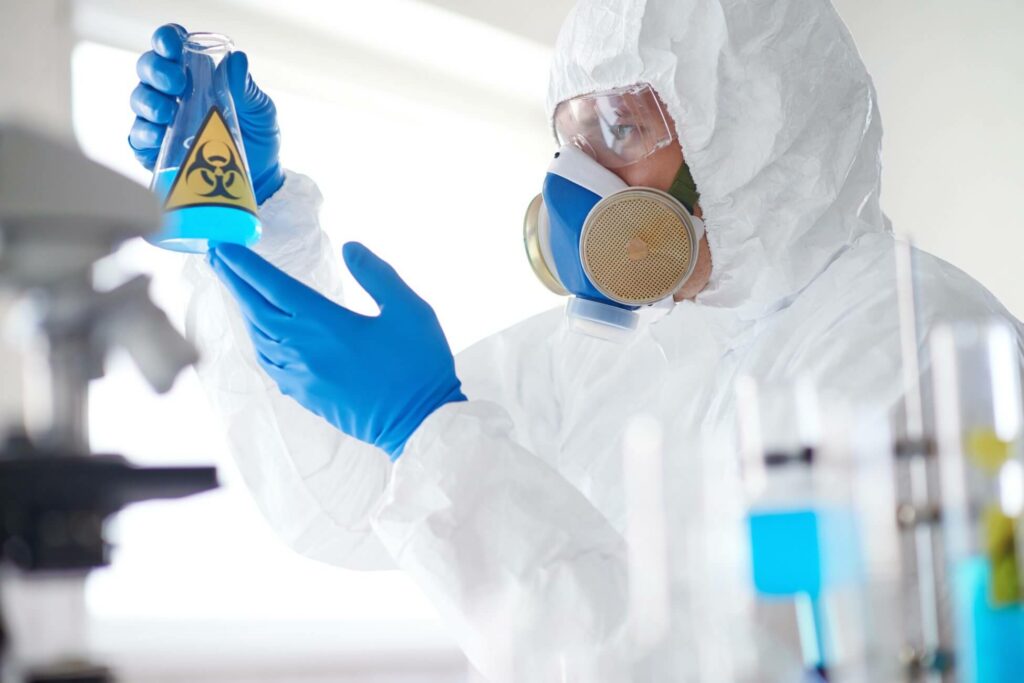This is how to work safely with hazardous substances in 2024
Risks and preventive measures
When it comes to workplace safety, handling hazardous substances is an important aspect. A hazardous substance is a substance that can be harmful to health and/or the environment. It can be gases, liquids or powders, for example. Exposure to these substances can pose various health risks.
In this article, we take a closer look at issues including:
- Exposure of hazardous substances
- Inhaling unsafe substances
- Fabric register
Substance exposure
Exposure to non-safe substances can occur in several ways. For example, through the skin, by ingestion or by inhalation.
Inhalation (of vapours, mists or fine particles) is one of the most common ways of exposure to hazardous substances. When the hazardous substances are inhaled, they enter the lungs and can cause damage. This may lead to respiratory problems, allergies, irritation of the eyes and nose, headaches, dizziness and even severe illnesses.
It is important to prevent or minimise exposure to unwanted substances. This can be done by using personal protective equipment (PPE) such as a breathing mask, gloves or protective clothing. At Wijngaarden VeiligGoed, we offer different types of PPE to protect workers.
More information on using the right PPE? Visit contact with us and schedule a no-obligation meeting with an advisor.

Inhaling the wrong substances
Here are some tips to avoid inhaling threatening substances:
- Ventilation: Ensure good ventilation in the workplace. This drains vapours and gases and reduces the risk of exposure to hazardous substances.
- Personal protective equipment: Wear appropriate PPE such as respiratory protection.
- Awareness: Make employees aware of the dangers of unsafe substances and how to recognise them. This can be done, for example, through training and instructions.
- Storage: Make sure substances are stored properly and employees know how to handle them safely.
Register for substances that are hazardous
A hazardous substances register is a register in which all unsafe substances present in the workplace are recorded. This register is mandatory for employers to comply with health and safety legislation and ensure workplace safety policies.
The register contains information on the hazardous substances present in the workplace, the hazards posed by these substances and the measures to be taken to prevent or minimise exposure to them.
In the hazardous substances register include the following data:
- The name of the dangerous substance and the danger symbol;
- The quantity of the dangerous substance present in the workplace;
- The risks of the hazardous substance and health and environmental impacts;
- The measures taken to prevent or minimise exposure to the hazardous substance, such as PPE and ventilation;
- The management responsibility of substances and monitoring compliance.
The hazardous substance register is an important tool for managing hazardous substances in the workplace and minimising risks to workers. Employers are responsible for establishing and maintaining the register and must ensure that the register is always up to date and that employees have access to it.

PPE Hazardous substances
The use of personal protective equipment (PPE) is an important part of preventing exposure to unsafe substances in the workplace. This should include breathing protection, gloves, protective clothing, eye and face protection and hearing protection. It is important here that the right type of PPE is used for the specific hazardous substance.

Contact us
Substances that are hazardous pose a high risk to workers' health. It is therefore very important that employers take the right measures to minimise exposure to these substances to create a safe working environment.
At Wijngaarden VeiligGoed, we are ready to help employers choose the right PPE and provide tailored advice. So feel free to contact us and find out what we can do for you.
Frequently Asked Questions
What are hazardous substances in the workplace?
These are materials that can be harmful to workers' health or safety, such as chemicals, gases, or substances that are flammable, toxic, or corrosive.
How can exposure be prevented?
Exposure can be prevented by using personal protective equipment, adequate ventilation, and following safety procedures and regulations.
What is personal protective equipment (PPE)?
PPE is equipment such as gloves, masks, safety glasses, and special clothing that protects workers.
What is a hazardous materials register?
This is a document containing information on the non-safe substances in a company, including their properties, risks, and safety instructions.
Why is training important?
Training ensures that workers are aware of the risks and know how to work safely with these substances, which helps prevent accidents and health damage.

Our advisors are happy to help you or make an appointment if you wish.
Phone: +31 184 434 455
Mail: info@veiliggoed.nl
